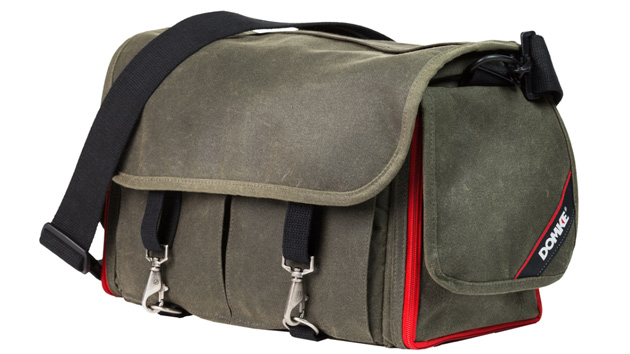A Bag for the Generations, and for Your Most Trusted Stuff
There are some things shooters naturally acquire as we go through our careers. We gain experience and confidence, of course, and I suspect many of us acquire more than a modicum of wisdom and insight into human behavior and fear-based producers. Not incidentally, we also acquire a clutch of core gear that is our most trusted stuff. When I worked for the National Geographic through the 1980s, I had my venerable lineup of gear on every assignment including, among other things, my ARRI 16SR, my Sachtler 7+7, and my Domke bag.
Unlike most gear in the throwaway digital age, the life of a Domke bag is measured not in years or even decades, but generations. Introduced more than 40 years ago, Domke bags have been in the DNA of globe-trotting, hyperventilating photographers and videographers for two very good reasons: they are thoughtfully designed, and they don’t fall apart.
Every bag is handmade in a cut-and-sew factory located outside of New Haven, CT, where the local folks have always made some very good stuff — including the world’s greatest pizza. Canvas stitched, water repellent, and rough as hell, their basic design and construction are virtually unchanged since Jim Domke first set up his makeshift shop near Philadelphia International Airport in the mid 1970s.
It was then that Domke, a photojournalist for the Philadelphia Inquirer, finally addressed the question that had been nagging him for years: why are most camera bags so poorly designed? He decided to design and manufacture his own, and do it right.
Built to last multiple lifetimes, the Domke bag, manufactured in Connecticut, features a top-quality waxwork finish that combines excellent durability and flexibility with a soulful character. Any way you cut it, these bags are beautiful! The Chronicle bag (shown) is expandable to accommodate longer lenses like the Canon 70–200, which would stick out a bit in the older series bags. At one point a larger Domke bag was considered, but the idea was soon abandoned as the bag would likely become too heavy to be practical for run-and-gun type applications.
A New Domke Bag (Well, Sort Of)
A simple rule in life is you don’t mess too much with your most trusted things, or you run the risk of debasing the very things that you so revere.
The latest Domke models are fundamentally unchanged from the first bags designed by Domke several decades ago. The new models do feature a few enhanced features, like expandable pockets on the side and rugged Velcro inserts that adhere to the interior fabric. And the Velcro is quiet. This is no small point. We don’t want to be drawing attention to ourselves while working the White House press line or on the plains of Uganda, creeping around the backside of a white rhino for an over-the shoulder shot.
While the Domke bag is designed primarily for still photographers, the DSLR shooter can also take advantage of the bag’s versatile design. For most shooters, the Chronicle size bag is ideal, holding the DSLR camera body and three or four lenses.
While the original Domke bag had no zippers, today’s models feature zippered pockets on the top and side. There is a top zippered compartment that is ideal for storing a mic, small recorder, and cables.
Still, the proper bag is not just about storing gear. The bag also has to be efficient, easy to work out of, and managable in the heat of battle, when swapping lenses or filters, for example.
Mike Sheras (right), the great photojournalist whose experience and career in sports spans more than four decades, appreciates his bag’s top flap, which that can be removed and reattached with a simple hook.
He points out the bag’s cover is stiff enough to use as an improvised table — a handy feature when servicing the camera in the field or unloading cards in a rush to a hard drive or computer.
Veteran photojournalist Mike Sheras has been shooting All-Star games and the World Series since the 1970s and has used his Domke bag from the earliest days. Mike now has upwards of 10 Domke bags in his arsenal — and most are well over 20 years old.
It's In the Bag
As professional shooters and craftsmen, we seek out and value our Most Trusted Stuff. Intuitively we reach into the bag for a lens or accessory, and find it instantly. The Domke bag is that reassuring. It's like a trusty friend — year-in and year-out, we reach for the bag and know it’s there.















Nice review. Warms my heart to think of you traveling with the 16SR and Sachtler. Those were the days.
Well, I like keeping it flexible without becoming a padded box. The idea is to be able to take out the camera quickly and not miss a shot, change lenses and put it back into the bag without having to change lenses again.